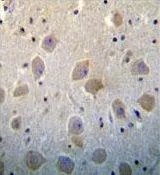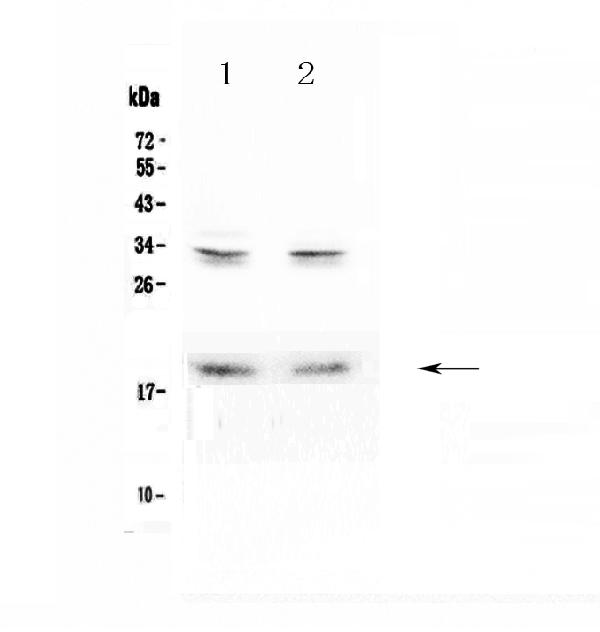Pleiotrophin antibody
GTX10849
ApplicationsWestern Blot, ELISA
Product group Antibodies
TargetPTN
Overview
- SupplierGeneTex
- Product NamePleiotrophin antibody
- Delivery Days Customer9
- Application Supplier NoteWB: 0.1-0.2 microg/ml. ELISA: 1:200. *Optimal dilutions/concentrations should be determined by the researcher.Not tested in other applications.
- ApplicationsWestern Blot, ELISA
- CertificationResearch Use Only
- ClonalityPolyclonal
- ConjugateUnconjugated
- Gene ID5764
- Target namePTN
- Target descriptionpleiotrophin
- Target synonymsHARP, HB-GAM, HBBM, HBGF-8, HBGF8, HBNF, HBNF-1, NEGF1, OSF-1, pleiotrophin, heparin affin regulatory protein, heparin-binding brain mitogen, heparin-binding growth factor 8, heparin-binding growth-associated molecule, heparin-binding neurite outgrowth promoting factor, heparin-binding neurite outgrowth-promoting factor 1, osteoblast-specific factor 1, pleiotrophin (heparin binding growth factor 8, neurite growth-promoting factor 1)
- HostGoat
- IsotypeIgG
- Protein IDP21246
- Protein NamePleiotrophin
- Scientific DescriptionHuman pleiotrophin is produced by a 168 amino acid residue PTN precursor. A 136 amino acid residue mature recombinant human pleiotrophin results from removal of the 32 amino acid residue signal peptide. Recombinant PTN has a predicted molecular mass of approximately 15.3 kDa. In SDS-PAGE, it migrates as an 18 kDa band, which may be due to its high lysine content. Pleiotrophin is highly conserved; human, bovine, rat, and mouse PTN share >98% amino acid sequence homology. Pleiotrophin is a member of a family of heparin-binding, developmentally regulated cytokines. It is active in growth and development and has mitogenic and neurite outgrowth activity. The gene for pleiotrophin is highly expressed in brain, uterus, gut, muscle,lung, and skin tissues. Pleiotrophin mRNA is expressed in osteoblasts, chondrocytes, fibroblasts, astrocytes, Schwann cells, and tumor cells.
- Storage Instruction-20°C or -80°C,2°C to 8°C
- UNSPSC12352203







